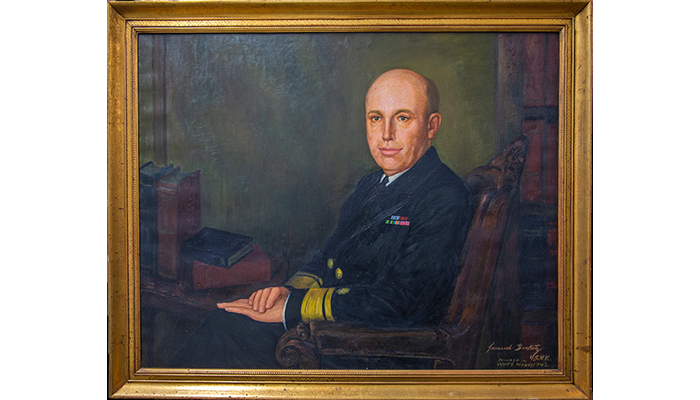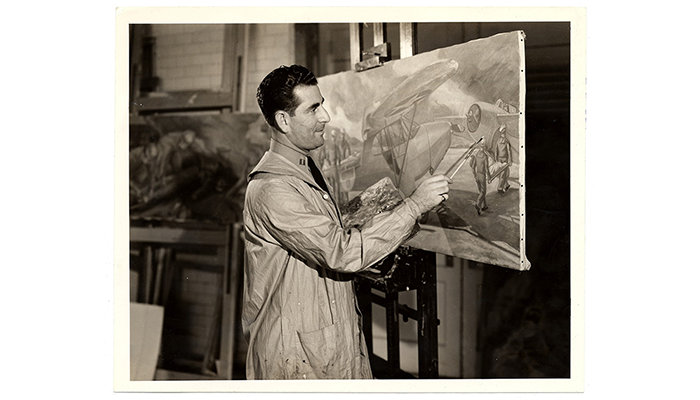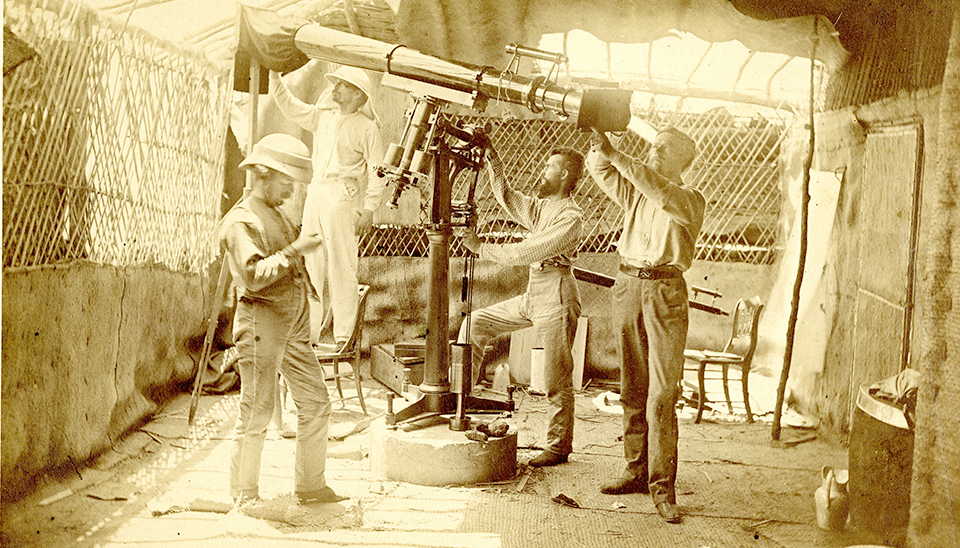In 1990, prominent Washington, D.C. artist Samuel Bookatz donated a painting to the National Museum of Health and Medicine. Far from being a recent work, Bookatz gave to the museum one of his earliest pieces, a 1942 oil portrait of Vice Admiral Ross T. McIntire, Surgeon General of the Navy and President Franklin D. Roosevelt's personal physician during World War II.
Born in 1910, Bookatz graduated from the Cleveland Institute of Art, disappointing his Russian immigrant parents, who wanted him to become a doctor. He would eventually attend Harvard Medical School to improve his understanding of anatomy. In 1937, he earned a scholarship to study in Europe for several years, living an artist's "vagabond" life, as so many had done before him. However, in a world increasingly dominated by fascism, Bookatz's time was not without incident. He was arrested in Italy for failing to stand in the presence of Prime Minister and fascist party leader, Benito Mussolini. Later, in France, Bookatz was thrown off a train by Nazi officers for attempting to help a Jewish child. When a ship was mysteriously burned one night in Marseilles, he was detained by French police and interrogated as a suspected saboteur. Bookatz, himself Jewish, was aboard the last U.S. ship out of France shortly before the Germans marched into Paris in 1940.
Meanwhile, Vice Adm. Ross T. McIntire, an otolaryngologist (a doctor specializing in head and neck health), had been named personal physician to President Roosevelt in 1933, becoming a close friend and advisor. In 1938, Vice Adm. McIntire was appointed Surgeon General of the Navy and Chief of the Bureau of Medicine and Surgery of the Navy, but he remained almost constantly in the White House. Soon after Samuel Bookatz was back in Cleveland, he painted an advisor to President Roosevelt, David Dietz. Dietz asked Bookatz if he wanted to join the Navy, and Bookatz responded, "great." A few days later, Dietz returned and told him, "Sam, you're in the Navy."

Portrait of U.S. Navy Vice Admiral Ross T. McIntire painted by Samuel Bookatz in 1942. This painting was later donated by the artist to the museum. (191106-D-D0458-1001: NMHM photo)
Bookatz found himself with a commission and a position at the White House, though he was still uncertain about how to salute correctly. At this time, President Roosevelt, himself a former Secretary to the Navy, wanted an artist to document medical history and the service's contributions to the war effort. Bookatz took up the position, his first assignment being sketches of the President and First Lady, as well as a portrait of Vice Adm. McIntire.
For the next several years, Bookatz worked in a studio that also happened to be the Lincoln bedroom, which was next door to Eleanor Roosevelt's office. He vacated the space only when there was an exceptionally tall guest who needed the (long) Lincoln bed. Lincoln's desk, chair, and Bible are visible in Vice Adm. McIntire's portrait.

Samuel Bookatz applies the finishing touches to one of his mural panels for the Norfolk Hospital Corps School, 1943. (Image courtesy of Louise Bruner papers, Archives of American Art, Smithsonian Institution)
In 1945, Bookatz was assigned to the recently-built Oak Knoll Naval Hospital in Oakland, California. Oak Knoll was established to treat military personnel wounded in the Pacific theater; Bookatz documented the plastic surgery and facial reconstructions of injured soldiers, sailors, Marines, and airmen. Bookatz was called back into service during the Korean War, painting murals with historical themes in Bethesda, Maryland as well as illustrating surgeries in the operating room. Despite his years as a "combat artist," Bookatz became better known as an abstract artist, eschewing most portraits in later years (except for military officers). Bookatz, who also worked as sculptor, prided himself on the diversity of his stylistic range, "I'm an everything painter, really […] the realist to the abstract." Upon his death at the age of 99 in 2009, Bookatz was a well-collected artist with artworks in The Phillips Collection, a museum in Washington, D.C., and the Hirshhorn Museum and Sculpture Garden at the Smithsonian Institution.
Resources
Archives of American Art. "Samuel Bookatz, 1943."
https://www.aaa.si.edu/collections/items/detail/samuel-bookatz-1987
Herman, Jan K. "Artist for the President." U.S. Navy Medicine 72, no. 6 (Nov.-Dec. 1984).
Ruben, Robert J. "Dr. Ross McIntire, Otolaryngologist, and his Care of President Franklin D. Roosevelt." OtolaryngologyâHead and Neck Surgery 144, no. 1 (July 2009): 4-6.
https://www.ncbi.nlm.nih.gov/pubmed/19559948
Sullivan, Patricia. "Eclectic Washington Painter Samuel Bookatz Dies at 99." Washington Post, Dec. 1, 2009.
Relevant Links
The President's Vital Signs: A Look Back at FDR's Heart Health
https://navymedicine.navylive.dodlive.mil/archives/8066
Navy Medicine Magazine (Jan.-Feb. 2010): Cmdr. Sam Bookatz, MSC, USNR, Navy Artist in War
https://issuu.com/navymedicine/docs/navmed-jan-feb-2010/29
Painting of U.S. Navy Rear Admiral Edward Rhodes Stitt by Samuel Bookatz
https://www.history.navy.mil/our-collections/photography/numerical-list-of-images/nhhc-series/nh-series/NH-96000/NH-96353-KN.html




